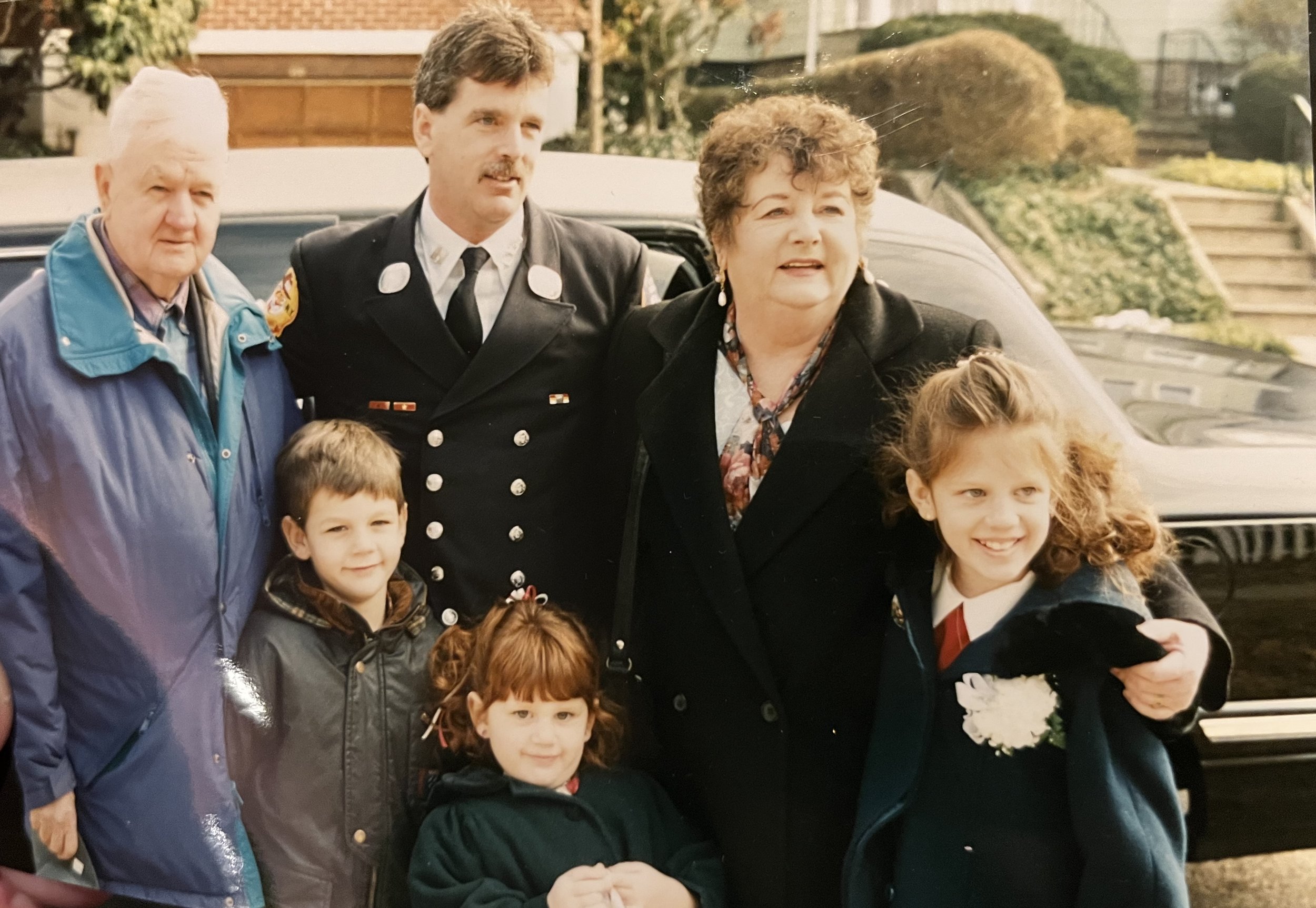
Orio’s Story
A Message From the Palmer Family
Our dad’s actions on September 11th—and the way he lived his life leading up to that day—have long been a source of motivation and inspiration for us, as well as for our friends and family.
Over the years, we’ve heard from many people who never knew him personally, but who were deeply moved by his story and driven to push a little harder, stand a little taller, or lead with more courage because of it.
We share his story here in the hope that it might offer you the strength or inspiration you need, whenever you might need it most.
Warm regards,
Dana, Keith, and Alyssa Palmer
“The 45-year-old Palmer was one of the department's rising stars, renowned for his smarts and nerve and decency, as well as his physical fitness."
— Michael Daly, Daily News
9/11 Radio Transmissions
In 2005, recordings of the FDNY radio transmissions from 9/11 were declassified and made available to the public as a result of a New York Times Freedom of Information Act lawsuit.
These radio transmissions revealed the efforts made by FDNY Battalion Chief Orio Palmer and the members of Ladder 15 to mount a rescue inside the South Tower of the World Trade Center.
Prior to the release of these recordings, it was believed that no first responders made it to the point of impact where the plane struck the building.
Since then, the actions of Palmer, Fire Marshall Ron Bucca, Lt. Joseph Leavey, and the members of Ladder 15 have been recognized as an extraordinary example of courage, heroism, and selflessness.
For the complete radio transcript, click here.
The Story of Battalion Chief Orio Palmer on September 11, 2001
Chief Orio Palmer played a pivotal role on September 11th, 2001. His radio transmissions provide an extraordinary real-time account of his actions inside the South Tower (Tower 2) of the World Trade Center. Here’s a reconstructed story of what he did based on the radio logs:
THE LOBBY
Early on the scene, Chief Orio Palmer quickly recognized the critical communication challenges at the Twin Towers. At around 9:05 AM, he was actively working to establish and test communication repeaters between himself and other chiefs. Recognizing the need for operational coordination, he ensured repeater activation and adjusted radio channels to maintain contact—despite known interference issues in the towers.
By 9:18AM, Palmer was in the lobby of the South Tower, coordinating with other units. He is reported to have fixed an elevator, and accompanied by members of Ladder 15, they used it to reach the 40th floor.
SOUTH TOWER ASCENT
Over the next 30 minutes, Palmer led the climb upward through the building, floor by floor. His radio transmissions reveal that by 9:32 AM, he had reached the 55th floor, and by 9:45, he had climbed all the way to the 74th floor. At that point, he noted structural damage to the stairway walls but no significant smoke or fire.
Orio reported finding a marshal on the 75th floor, Fire Marshal Ron Bucca, who had climbed to that point from the ground floor.
Palmer continued upward, calmly relaying critical information back to command, including conditions of the stairwells, elevator status, and injured civilians.
THE IMPACT ZONE
By 9:52 AM, Palmer had reached the 78th floor—the impact zone of United Airlines Flight 175. He reported:
“We’ve got two isolated pockets of fire. We should be able to knock it down with two lines… 78th Floor numerous 10-45 Code 1s.”
This means he was reporting numerous civilian fatalities. According to survivor accounts of the 78th floor, a sky lobby, it had been crowded with over 200 people after the North Tower was hit and an evacuation order had been given over the South Tower’s PA system, and then rescinded.
After the plane struck the South Tower, many were killed instantly or critically injured and unable to evacuate. All elevators and staircases except one, Staircase A, were destroyed.
Despite the devastation, Palmer remained focused and composed, calling for additional engine companies to assist with the casualties and hoses to begin extinguishing fires and rescue operations. He described having a house line stretched and just needing water to begin suppression efforts.
He directed Ladder 15 to assist him in the A stairway (south stairwell), working to consolidate efforts and maintain access routes. Meanwhile, other firefighters, like those from Ladder 15 Roof and 15 OV, were struggling through fire and damage in nearby stairways to reach him.
At 9:56 AM, Palmer learned that some of his men were trapped in the B stairwell due to fire. His last known actions included coordinating efforts to extinguish fire, calling for water supply, and helping guide crews through compromised floors toward the impact zone to help trapped civilians.
The final confirmed transmission from Palmer occurred at 9:58 AM, less than two minutes before the South Tower collapsed at 9:59 AM.
Orio’s Legacy
Since the declassification of the radio transmissions that revealed Orio’s actions on September 11th, his composure, leadership, and extraordinary physical fitness have served as a powerful source of inspiration—not only for firefighters, but for anyone who learns his story.
Orio has been featured in documentaries, his voice lives on in the 9/11 Memorial Museum, streets have been renamed in his honor, the FDNY's Physical Fitness award is now named after him, American flags have flown over war zones in his name, trees planted in foreign soil for him, races run in his name, school projects written about him, service dogs named after him—and more.
Orio’s wife, Debbie, passed away in 2021. His 3 children, Dana, Keith, and Alyssa, and his 6 grandchildren live in Long Island, NY.
Orio’s mother, Agnes, his father, Orio, and brother, Stephen, have since passed away. Orio’s 3 sisters, Katherine, Agnes, and Mary, and his older brother Vincent all live in New York with their families.
